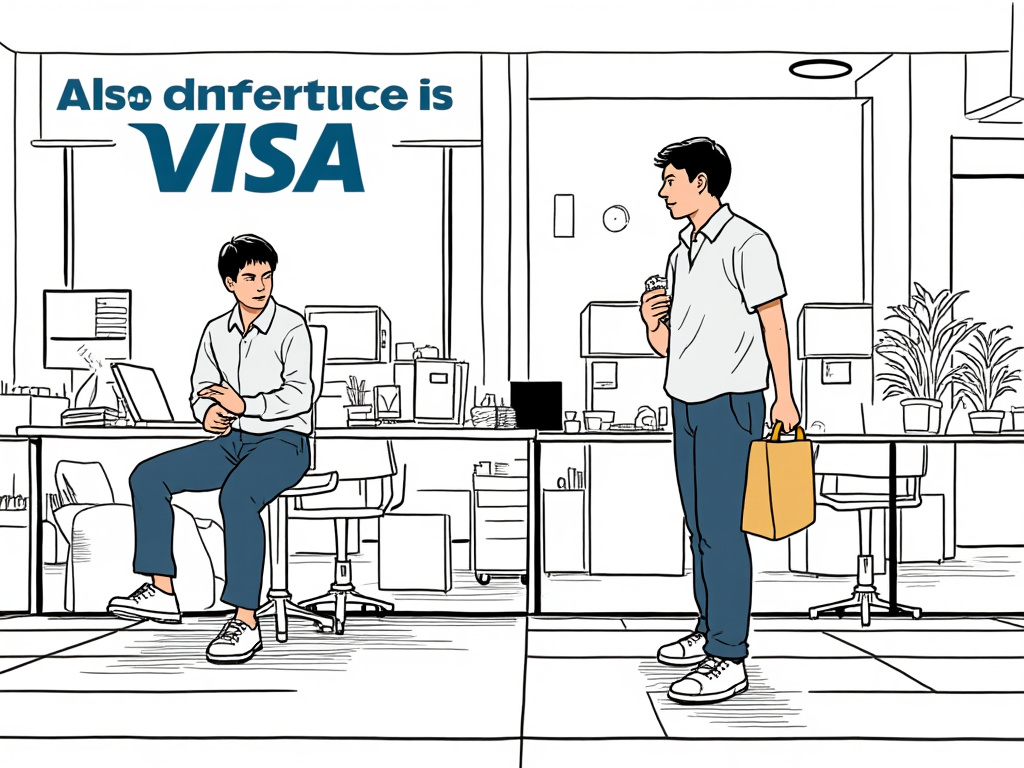
The €100,000 Fixed Tax Regime: A Strategic Gateway for Global Professionals in Italy
Reading time: 12 minutes
Table of Contents
- Introduction to Italy’s Fixed Tax Regime
- Eligibility Requirements and Qualification Criteria
- Key Benefits and Strategic Advantages
- Application Process and Documentation
- Tax Planning Considerations
- Real-World Applications: Case Studies
- Alternative Tax Regimes and Jurisdictional Comparison
- Common Challenges and How to Navigate Them
- Your Global Tax Optimization Roadmap
- Frequently Asked Questions
Introduction to Italy’s Fixed Tax Regime
Ever felt trapped in a high-tax jurisdiction while your global mobility increases? You’re not alone. Italy’s €100,000 fixed tax regime represents one of Europe’s most compelling tax optimization strategies for internationally mobile high-net-worth individuals.
Introduced in 2017 and significantly enhanced in 2023, this regime allows qualifying foreign tax residents to pay a flat annual tax of €100,000 on all their foreign-source income, regardless of amount—effectively creating a tax ceiling that offers unprecedented predictability for global wealth management.
Let’s be clear: This isn’t about tax evasion—it’s about legitimate tax optimization within a framework specifically designed by the Italian government to attract talent, capital, and investment. Unlike traditional tax structures that assess progressive rates on worldwide income, this regime offers simplicity, certainty, and significant potential savings.
As Marco Cerrato, Senior Partner at Maisto e Associati tax law firm puts it: “The Italian flat tax regime represents one of the most competitive offers in Europe’s tax landscape for mobile high-net-worth individuals. It provides certainty in an uncertain global tax environment.”
Eligibility Requirements and Qualification Criteria
Before diving into the strategic possibilities, let’s establish who qualifies for this powerful tax planning tool.
Core Eligibility Criteria
To access the regime, you must satisfy three fundamental requirements:
- Foreign tax residency history: You must not have been an Italian tax resident for at least 9 out of the 10 tax years preceding your application
- Intention to relocate: You must establish genuine tax residency in Italy (more on what this means practically below)
- Application timing: You must opt into the regime either in your tax return for the first year of Italian residency or through a specific advance ruling procedure
These criteria are deliberately designed to attract new residents rather than provide tax advantages to existing ones—an important distinction that underscores the regime’s purpose as an economic development tool.
Establishing Italian Tax Residency
This is where theory meets practice. Under Italian law, tax residency is established when one of the following conditions is met for the majority of the tax year (183 days):
- Registration in the Italian Civil Registry of the resident population
- Having your habitual abode in Italy
- Establishing your center of vital interests (personal and economic ties) in Italy
The strategic implication? You need genuine connections to Italy—not merely a paper presence. Purchasing or leasing residential property, relocating family members, establishing social ties, and maintaining physical presence are all practical steps toward satisfying these requirements.
As financial advisor Elena Bianchi notes: “The most common mistake I see clients make is assuming this is a ‘residence on paper’ program. Italian tax authorities increasingly scrutinize residency claims, looking for authentic lifestyle changes rather than technical compliance.”
Key Benefits and Strategic Advantages
The €100,000 fixed tax regime offers several distinct advantages that position Italy as a compelling jurisdiction for wealth management and global mobility.
Financial Advantages
The core benefits extend well beyond the headline flat tax:
- Predictable tax liability: The €100,000 amount is fixed regardless of how much foreign income you generate
- Exemption from wealth taxes: Foreign assets are exempt from Italian wealth taxes (IVIE and IVAFE)
- No inheritance/gift tax on foreign assets: Foreign assets transferred during the regime period avoid Italian inheritance and gift taxes
- Simplified compliance: Reduced reporting obligations for foreign assets through exemption from monitoring obligations (quadro RW)
- Family extension option: Family members can be included for an additional €25,000 per person
For high-income individuals with substantial international holdings, these benefits create a compelling tax efficiency framework.
Lifestyle and Strategic Considerations
Beyond pure tax calculations, the regime offers quality-of-life advantages:
- European base of operations: Establish an EU foothold with access to the Schengen zone
- Italian lifestyle: Access world-renowned cuisine, culture, healthcare, and quality of life
- Duration certainty: The regime applies for up to 15 years from election (extended from the original 15-year limit)
- Flexibility: You can exclude specific jurisdictions from the regime if advantageous (e.g., to utilize specific tax treaties)
This combination of financial and lifestyle benefits has attracted entrepreneurs, executives, investment professionals, and high-net-worth retirees seeking both tax efficiency and quality of life.
Application Process and Documentation
Accessing the regime requires navigating a precise administrative process.
Application Options
You have two paths to election:
- Tax return election: Indicate your choice in your first Italian tax return after establishing residency (typically filed by September 30 of the following year)
- Advance ruling: Submit a request to the Italian Revenue Agency for a binding opinion on your eligibility before committing to the move
While not mandatory, the advance ruling provides valuable certainty before making significant life changes. Most sophisticated applicants opt for this path despite its additional complexity.
Required Documentation
For an advance ruling application, you’ll typically need:
- Passport and identification documents
- Documentation proving your tax residency history (tax residency certificates, tax returns from previous jurisdictions)
- Evidence of intention to establish Italian residency (property purchase/lease agreements, utility connections)
- Comprehensive information about your income sources and asset portfolio
- Family information if extending the regime to family members
- Power of attorney if working with legal representatives
Working with experienced Italian tax counsel is highly advisable given the technical nature of these submissions and their long-term implications.
Tax Planning Considerations
While the regime offers significant advantages, optimal implementation requires strategic planning around several key considerations.
Income Categorization Strategy
Understanding what constitutes “foreign-source” versus “Italian-source” income is critical. The €100,000 flat tax applies only to foreign-source income. Italian-source income remains subject to ordinary Italian taxation.
This distinction creates planning opportunities around:
- Investment structuring: Organizing investments to maximize foreign-source income
- Business operations: Structuring business activities to clearly delineate Italian versus foreign operations
- Real estate holdings: Strategic decisions about where to hold property assets
For example, if you’re contemplating establishing a new business venture, evaluating whether to base it outside Italy could significantly impact your overall tax position.
Excluded Countries Optimization
One of the regime’s most sophisticated features is the ability to exclude specific countries from the flat tax treatment. Income from these excluded countries is then taxed according to standard Italian rules, including the application of relevant tax treaties and foreign tax credits.
This creates opportunities for “cherry-picking” jurisdictions where:
- Favorable tax treaties exist between Italy and the source country
- Foreign tax credits would be more advantageous than the flat tax
- Specific types of income receive preferential treatment under Italian tax law
As tax attorney Francesco Nobili explains: “The excluded countries option requires sophisticated modeling to identify optimal configurations. For clients with concentrated income sources in specific jurisdictions, this optimization can yield substantial additional savings beyond the baseline regime benefits.”
Real-World Applications: Case Studies
Theory becomes clearer through practical examples. Let’s examine how different profiles leverage this regime.
Case Study 1: The Global Entrepreneur
Profile: Carlos, a Brazilian tech entrepreneur with businesses across Latin America and the US
Situation: After selling his primary business for €40 million, Carlos receives approximately €2.5 million annually from a combination of consulting contracts, board positions, and investment income from various countries. His effective tax rate in Brazil had been approximately 27.5%.
Implementation Strategy:
- Relocated to Lake Como, purchasing a €1.8 million villa as primary residence
- Structured his investment portfolio through Luxembourg and Swiss entities to ensure clear foreign-source characterization
- Excluded the United States from the regime to take advantage of the Italy-US tax treaty for certain investment activities
- Included his spouse in the regime for an additional €25,000
Outcome: Carlos reduced his annual tax liability from approximately €687,500 to €125,000 (€100,000 base + €25,000 extension), resulting in annual savings of over €560,000 while enjoying Italy’s lifestyle benefits.
Case Study 2: The Investment Professional
Profile: Sophia, a Hong Kong-based fund manager with global investment income
Situation: Earning €3.2 million annually through investment management fees, carried interest, and personal investment income. Previously paid effective rates of approximately 15% in Hong Kong but was concerned about changing regulations and seeking European lifestyle opportunities.
Implementation Strategy:
- Leased a luxury apartment in Milan and registered with local authorities
- Maintained her investment management activities through offshore structures
- Carefully documented physical presence in Italy (over 183 days) while maintaining global travel schedule
- Utilized advance ruling process to confirm eligibility before finalizing relocation
Outcome: Despite moving from a relatively low-tax jurisdiction to Italy, Sophia actually reduced her annual tax liability from approximately €480,000 to €100,000 while establishing a valuable EU presence for both personal and professional reasons.
Alternative Tax Regimes and Jurisdictional Comparison
The Italian regime exists within a competitive landscape of tax programs designed to attract mobile wealth. Understanding how it compares helps inform strategic decisions.
European Competitive Landscape
Here’s how Italy’s program compares to other European options:
| Country | Program Type | Annual Cost | Duration | Key Advantages |
|---|---|---|---|---|
| Italy | Flat tax on foreign income | €100,000 | 15 years | Comprehensive coverage, family extension, EU lifestyle |
| Portugal | NHR (Non-Habitual Resident) | 10% on pension, 20% on professional income | 10 years | Lower rate for certain professions, good for retirees |
| Greece | Alternative tax regime | €100,000 | 15 years | Similar to Italy but less established program |
| Cyprus | Non-Dom program | €60,000 minimum + variable | 17 years | Lower entry threshold, exemption on dividends |
| Malta | Global Residence Programme | 15% minimum tax | Indefinite | No time limit, English language, established program |
Each program has specific strengths depending on an individual’s income profile, wealth structure, and personal preferences.
Comparative Advantage Visualization
For a high-net-worth individual with €5 million in annual foreign income, here’s how effective tax rates compare across regimes:
As income rises, Italy’s fixed regime becomes increasingly advantageous compared to percentage-based alternatives.
Common Challenges and How to Navigate Them
While attractive, the regime isn’t without potential complications. Being aware of these challenges helps you navigate them effectively.
Residency Substance Challenges
The Italian tax authorities increasingly scrutinize residency claims to ensure they reflect genuine lifestyle changes rather than paper arrangements.
Potential Issue: Insufficient physical presence or maintaining stronger connections to another jurisdiction.
Strategic Solutions:
- Maintain detailed travel records demonstrating consistent Italian presence
- Establish meaningful personal connections (healthcare providers, club memberships, etc.)
- Relocate significant personal possessions to Italian property
- Consider the impact of family residence choices (particularly for children in education)
Proactive documentation of your Italian life integration provides valuable protection against future challenges.
Treaty Interaction Complexities
The interaction between the flat tax regime and various tax treaties can create unexpected complications.
Potential Issue: Source countries may question treaty benefits if they perceive the Italian tax burden as insufficient.
Strategic Solutions:
- Obtain tax residence certificates from Italian authorities to support treaty claims
- Consider strategic country exclusions to optimize treaty benefits
- Maintain detailed documentation of Italian residency for treaty purposes
- Work with advisors in both Italy and source countries to address potential challenges
Tax attorney Giovanni Rossi cautions: “We’re seeing increasing scrutiny from certain jurisdictions questioning treaty eligibility for flat tax participants. Strategic planning around which countries to include or exclude from the regime is becoming increasingly important.”
Your Global Tax Optimization Roadmap
If you’re considering the Italian flat tax regime as part of your global mobility strategy, here’s a practical roadmap to guide your journey:
Phase 1: Strategic Assessment (3-6 months before potential move)
- Conduct a comprehensive tax analysis comparing your current situation with the Italian regime scenario
- Model different country exclusion options to identify optimal configuration
- Evaluate lifestyle compatibility with Italian residency requirements
- Assess your current tax residency status and any exit implications from your current jurisdiction
- Identify required structuring changes to segregate future Italian-source income
The goal of this phase is a clear-eyed decision about whether the regime aligns with both your financial and lifestyle objectives.
Phase 2: Implementation Planning (If proceeding)
- Assemble your advisory team (Italian tax counsel, international tax advisors, relocation specialists)
- Prepare advance ruling documentation if pursuing this path
- Identify suitable Italian property and begin residency establishment steps
- Structure investment vehicles to optimize income source characterization
- Develop comprehensive documentation strategy for supporting genuine residency
Proper preparation during this phase creates a strong foundation for a successful transition.
Phase 3: Ongoing Compliance and Optimization
- Maintain meticulous residency documentation (travel records, integration evidence)
- Conduct annual regime optimization reviews to assess if country exclusions should be modified
- Monitor regulatory developments in Italy and excluded jurisdictions
- Consider long-term succession and wealth planning implications
- Evaluate potential permanent residency or citizenship pathways if desiring long-term Italian presence
Remember that tax optimization is never “set and forget”—it requires ongoing attention to changing circumstances and regulations.
As you consider this pathway, ask yourself: Beyond the numbers, how might accessing the Italian lifestyle while optimizing your global tax position transform both your financial and personal future? The most successful applicants view this not merely as a tax strategy but as a holistic life opportunity.
Frequently Asked Questions
Can I maintain business activities in my previous country of residence?
Yes, you can maintain business activities in other countries, but income derived from these activities would be considered foreign-source income covered by the €100,000 flat tax (unless you specifically exclude that country). The key consideration is ensuring you don’t establish a permanent establishment in Italy that would generate Italian-source income. Many regime participants maintain global business interests while basing themselves in Italy.
What happens if I leave Italy before the 15-year regime period ends?
You can exit the regime at any time without penalty by simply not paying the annual €100,000 tax or by explicitly communicating your exit to the tax authorities. Once you exit, you cannot re-enter the program. If you maintain Italian residency after exiting the regime, you’ll become subject to standard Italian taxation on your worldwide income. If you depart Italy entirely, normal exit rules apply, but there are no “clawback” provisions for benefits previously received under the regime.
Can digital nomads or remote workers benefit from this regime?
Yes, with careful planning. Remote workers can potentially qualify, but must establish genuine Italian residency and carefully structure their employment arrangements. The critical question is determining the source of employment income—if your employer is foreign and work is performed for foreign benefit, income may qualify as foreign-source under the regime. However, if you’re employed by an Italian entity or provide services primarily benefiting Italian operations, this would likely constitute Italian-source income subject to normal taxation. Digital nomads should also ensure they satisfy the physical presence requirements for Italian tax residency.

Article reviewed by Nathan Dubois, Commercial Real Estate Financier | Structured Deals & Debt Solutions, on May 15, 2025


